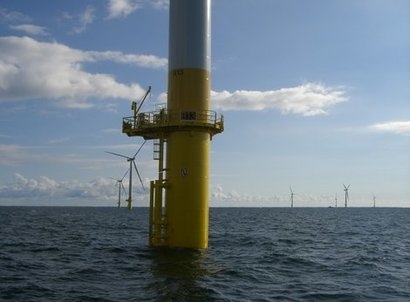
Vineyard Wind is proposing an 800-megawatt wind energy project offshore Massachusetts. The proposed project would be located approximately 12 nautical miles offshore Martha's Vineyard and 12 nautical miles offshore Nantucket in the northern portion of its lease area.
BOEM published a Draft Environmental Impact Statement (EIS) for the Vineyard Wind I project in December 2018 and received comments from a wide variety of stakeholders, including state and local governments, federal agencies, industry, and the public. Those comments prompted BOEM to develop a Supplement to the Draft EIS, which was released last month and which expanded its cumulative activities scenario for offshore wind development beyond what was considered in the DEIS. This expanded scenario includes all named wind projects and state demand that can be met with existing leases. It also considers previously unavailable fishing data, a new transit lane alternative, and changes to the Construction and Operations Plan.
During the 45-day public comment period following the release of the supplement, BOEM conducted five live, virtual public meetings to enable the public to learn more about the review process, EIS schedule, potential impacts and proposed mitigations of the proposed project.
“We urge BOEM to move toward timely approval of this milestone project, at last unlocking the enormous potential for offshore wind to meet our nation’s growing appetite for clean energy, create tens of thousands of jobs, and provide substantial investments into the American economy” said Laura Morton, AWEA Senior Director of Policy and Regulatory Affairs, Offshore.
“It is time for our country to start catching up to global competitors, who are already harnessing the significant economic and environmental benefits of offshore wind. The offshore wind industry remains committed to collaborating with other ocean users as we move forward. We are confident that the deployment of offshore wind can be compatible with commercial fishing and safe navigation, as has been demonstrated in many other countries that are already safely and successfully operating offshore wind farms.
"AWEA strongly agrees with the analysis from the US Coast Guard and BOEM that the turbine spacing and uniform grid layout proposed by offshore developers for the adjacent Massachusetts and Rhode Island lease areas, which is reflected in Alternative D2 in the draft supplemental environmental impact statement and results in 200 transit lanes through the lease areas, will ‘maximize safe navigation,’ as the Coast Guard determined. There is no reason to adopt Alternative F to provide even wider transit lanes when Coast Guard and BOEM analysis demonstrates it is worse for navigation safety. By finishing the environmental review in a timely fashion, BOEM will signal that US offshore wind is about to take off, attracting the 83,000 American jobs and $25 billion in annual economic investment this industry represents. On the other hand, additional delays and regulatory uncertainty will likely cause these careers and dollars to flow to Europe and other countries whose policies support clean, safe, and affordable offshore wind.”
For additional information:

